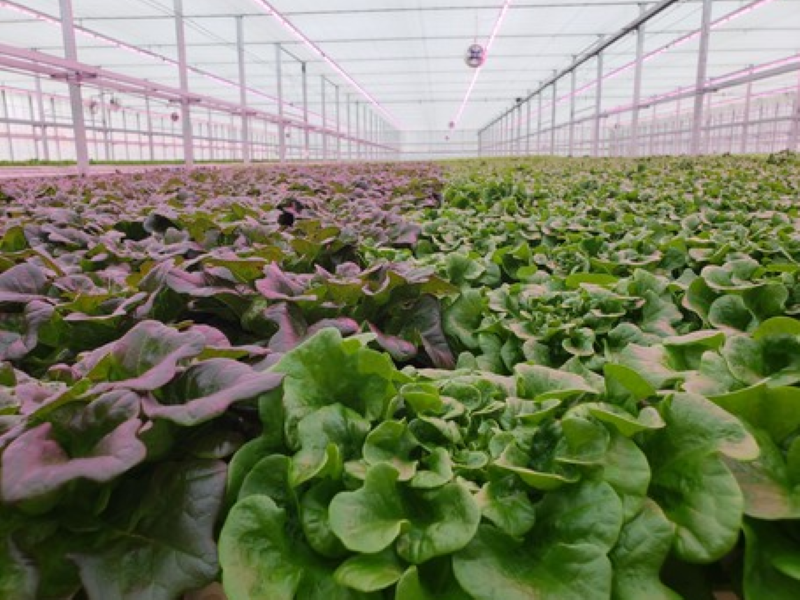
Most of us will know that Hydroponics is a type of “Soil-less” culture, which is a method of growing plants without soil, by using mineral nutrient solutions in water solvent. It comes under the Horticulture discipline, and has many advantages, one of them being a decrease in water usage. This method is considered as superior methods of cultivation when compared with the traditional soil-based cultivation method. In comparison to farming on the soil, Hydroponic cultivation method requires about 80-90% lesser quantity of water.
Vegetables grown under Hydroponic set up are in high demand, and the trend for seeking vegetables/fruits grown through this method is rising every year. This system is beneficial in enabling growers to produce fresh and healthy vegetables on a controlled and consistent basis. When compared with cultivation under soil, Hydroponics is one of the most water-efficient methods. Since the system can be designed and built according to the space available, it can be inferred that in case of lesser space, it is not a matter of concern generally. If you believe in experimenting with farming, then growing plants with hydroponics method is most likely to catch your attention.
If new to hydroponics then is advisable to select those vegetables and plants that most growers have produced successfully. Studies and feedbacks from successful growers convey possibility of larger yields through Hydroponic greenhouses than a traditional greenhouse. Here it will be important to consider that in order to maximize the chances of successful production the grower must understand which plants to grow under this method. One should be aware of some facts that few plants may spread out too much to grow properly in a hydroponic greenhouse, and few others may be suited to cooler weather, hence may not survive under high temperatures. Also, one should also have knowledge about plants that need special attention, when growing in a Hydroponic greenhouse. There is easy availability of the raw materials and supplies for hydroponic systems in the online and offline markets. Hydroponics not only helps a grower in designing own system, it also offers opportunity to produce fresh and healthy vegetables for the entire year. Now Let us know which plants can be grown in a Hydroponic Greenhouse:

Strawberries
This type of cultivation environment is suitable for strawberries. The usual layout of the hydroponic greenhouses comfortably accommodates the fruit. Depending upon the size of berry and desired sweetness level, there are lots of varieties to choose.
Potatoes
Hydroponic systems can support growth of potatoes and other root crops as well. But they should be provided sufficient depth to grow adequately. This is because there is lot of growth in the root area, in addition to growth in stems and foliage. So if these plants are grown in lesser space, overall growth will be restricted. One can prefer smaller varieties of the root crops, in order to provide sufficient depth.
Tomatoes
Tomatoes grow well under this method. In case of tomatoes it is necessary to provide them a support system, similar to when cultivated in a traditional greenhouse or home garden set up.
Mint
Mint needs wet weather to grow therefore in Hydroponic greenhouses one has greater option to choose lot many varieties. Mints should be given enough space as they spread quite a bit. With this method you can easily grow any type of mint – be it peppermint, spearmint, ginger mint etc.
Basil
Basil is a herb and can be grown in the hydroponic setup. The moist conditions provided to the herb through this system are beneficial in enhancing the herb’s flavor. Like other plants, yield is most likely increase using hydroponic methods of cultivation.
Lettuce
There are various types of lettuce providing different flavors. Normally the iceberg is commonly produced variety but when it comes to growing hydroponically, once can think of growing romaine, sweet butter and many more varieties, to be used in your salad menu.
Cabbage
Cabbage needs cooler temperature for proper growth, hence suitable for growing hydroponically. One may be required to adjust growing conditions for the cool weather vegetables. This would imply that it will be necessary to grow the plants according to their natural seasons. One can change the temperature settings in your greenhouse as per the crops decided for cultivation.
Green Beans
Normally the Bush-style green beans adjust quite well with the typical conditions set up in a hydroponic system, although pole beans can be grown as well. Also, the size of bush-style beans is convenient to manage versus pole beans.
Plants that require Additional Care in Hydroponic Greenhouse
Watermelon, other melons, squash, and corn are some of these vegetables which occupy greater space to grow, making it difficult to thrive well in Hydroponic greenhouses. Therefore these plants need growers addition care like pruning on a regular basis. Few varieties of pumpkin varieties allowed for the space they need. This is done by planting them outside where they can spread and increase in size accordingly.
Many plants have both male and female flowers on them therefore need the bees to pollinate them. Hydroponic set ups do not have bees inside the structure, so cultivating these plants are a bit labor intensive. Nevertheless if the task of pollinating these plants is done by the grower himself, then chances of proper growth will be higher.










